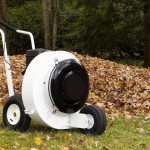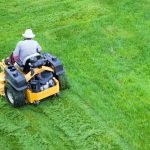Every homeowner and gardener wants to have a lush, awe-inspiring lawn. Seeing well-groomed, vibrantly green, lush grass underfoot is enough to draw attention and make the neighbors notice. The key thing to remember is that more than a simple watering and routine mowing are necessary to achieve that degree of grass beauty. It necessitates a systematic, all-encompassing strategy where the union of fertilizer and aeration is the focal point.
Imagine releasing your lawn’s latent potential, enabling it to flourish and realize its full potential. Imagine a carpet of lush, colorful grass that begs bare feet and beckons picnics with friends. The miracle of aeration then comes into play. The unsung hero is the key component that turns a typical yard into a work of art in greens.
It’s time to learn about the benefits of aeration and why it belongs in your regular lawn care regimen.
Understanding the Basics of Lawn Fertilizer
Soil Test and pH Balance
A soil test must be performed before beginning any fertilizing program for lawns. A soil test offers important information on the soil’s pH level and nutrient makeup. This information aids in determining your lawn’s particular fertilizer needs. Because it impacts the nutrients available to the grass, soil pH is particularly significant. The pH range of 6.0 to 7.0, slightly acidic to neutral, is ideal for most lawns.
Choosing the Right Fertilizer
The best fertilizer for plants at home will rely on a number of variables, including the type of grass, the makeup of the soil, and any nutritional deficits. Organic fertilizers are a great option for gardeners concerned about the environment because they release nutrients gradually and support soil health.
On the other hand, synthetic fertilizers enable exact nutrient management and offer speedy results. When choosing a fertilizer to fit your lawn’s unique demands, take into account elements like nitrogen (N), phosphorus (P), and potassium (K) ratios.
The Role of Aeration in Lawn Care
Benefits of Aeration
To relieve compacted soil and increase airflow, the soil is aerated by making tiny holes. Your grass will benefit from this process in several ways, including better root growth, higher fertilizer absorption, and increased water penetration. Aeration generates the ideal conditions for healthy development and vitality by enhancing the efficiency of nutrients and oxygen reaching the grass’s root system.
When to Aerate Your Lawn
The best time to aerate the grass is while it is actively growing. The best times to aerate cool-season grasses like Kentucky bluegrass and fescue are early spring or late fall. Aeration benefits warm-season grasses like Bermuda and St. Augustine grass in the late spring or early summer. Based on the degree of soil compaction, doing a soil fertility test can also assist in determining whether aeration is required.
Aeration Techniques
Core aeration and liquid aeration are the two main techniques for aerating grass. While core aeration entails manually removing tiny plugs of dirt from the ground, liquid aeration makes use of a liquid substance to loosen the soil without doing so. Both methods reduce soil compaction and let nutrients reach the root zone.
Maximizing Fertilizer Utilization Through Aeration
Aeration as a Pre-Fertilizing Practice
By fostering the ideal conditions for fertilizer absorption, aeration is a great pre-fertilization technique. Fertilizers may more effectively reach the root zone of grass thanks to aeration, which reduces soil compaction and enhances nutrient circulation. This increases the fertilizer’s efficacy, reduces waste, and encourages the creation of healthier turf.
Applying Fertilizer After Aeration
It’s important to appropriately apply the fertilizer after aerating your grass. Ensure the fertilizer is distributed evenly across the grass by following the directions on the fertilizer container. Watering the grass right away after fertilizing is advised to ensure that nutrients can adequately reach the soil. Avoid fertilizing when it’s hot and dry since it might cause grass damage and fertilizing burn.
Additional Considerations for Lawn Fertilizing
When to Fertilize Perennials and Shrubs
Knowing when to fertilize shrubs and perennials is critical for optimum growth and general plant health. Typically, the optimum time to fertilize these plants is while they are actively developing. This happens in the early spring, right as new growth begins, for most perennials and shrubs. During this period, you should use slow-release fertilizing to provide your plants with a consistent supply of nutrients.
Nevertheless, adhering to precise plant care instructions is crucial because some perennials and shrubs could have varied nutritional needs or prefer fertilizer at particular periods. Refer to plant-specific guidelines or speak with local horticulture for the most precise time to fertilize your plants.
How Often to Fertilize Plants in Pots
Potting soil is the only source of nutrients for plants growing in containers. Regular fertilization of potted plants is essential to ensure their healthy growth. Throughout the growing season, apply a balanced liquid fertilizer every two to three weeks, paying close attention to the manufacturer’s recommendations for the right amount.
Tree Fertilizer Spikes
Tree fertilizer spikes are a practical and efficient way to feed your trees with nutrients. These spikes are placed in the ground close to the tree’s drip line and gradually release nutrients. Follow the manufacturer’s instructions for determining the appropriate number of spikes based on the tree’s height and age.
Homemade and Natural Fertilizer Options
Benefits of Homemade and Natural Fertilizers
Despite the accessibility of commercial fertilizers, some gardeners like employing homemade and all-natural alternatives. Cost-effectiveness, environmental friendliness, and the capacity to alter nutrient content are benefits of using ‘plant fertilizer homemade.’ Compost and organic amendments are natural fertilizers that enhance soil health and offer a slow-release source of nutrients.
Plant-Based Homemade Fertilizers
Homemade fertilizers may be manufactured from a variety of plant-based components. For instance, compost may be steeped in water to produce compost tea, a nutrient-rich liquid fertilizer. Banana peels, rich in potassium, can also be used as fertilizer. The peels may be shredded and then buried as mulch around your plants.
Animal-Based Homemade Fertilizers
Animal-based products can also be used to manufacture efficient natural fertilizers. The use of fish emulsion, which is produced by fermenting fish waste, is one method that offers a high supply of nitrogen and micronutrients. Similarly, bone meal, prepared from crushed animal bones, is an organic source of calcium and phosphorus.
Other Natural Fertilizer Options
Several natural fertilizers are offered commercially in addition to homemade alternatives. Examples include blood meal, a high-nitrogen fertilizer made from animal blood, and seaweed extract, which offers a variety of minerals and encourages root development. These bio-based fertilizers may be used in place of synthetic fertilizers and are a great addition to sustainable gardening practices.
How to Fertilize Plants Naturally
Natural fertilization of plants encourages healthy development without synthetic fertilizers and is environmentally beneficial. Compost, abundant in nutrients and organic materials, is one approach. Make sure the compost does not contact the stems, and spread a layer around the base of the plants.
Compost may also be steeped in water to make compost tea, which can then be used to water plants and is rich in nutrients. Additionally, adding organic additions to the soil, such as bone meal, seaweed, or coffee grounds, might add crucial nutrients. These organic fertilizer techniques provide plant nutrition while encouraging ecologically friendly and sustainable gardening.
Monitoring and Adjusting Fertilizer Application
Importance of Monitoring
Monitoring fertilizer utilization results is essential to guarantee correct nutrient balance and avoid over fertilization. Check your plants and grass frequently for indications of nutrient excesses or shortfalls, such as scorched edges, stunted growth, or yellowing foliage. Monitoring enables you to maintain a healthy and thriving landscape by addressing any concerns as soon as they arise and making modifications as necessary.
Soil Testing for Nutrient Levels
A great tool for determining the nutrient levels in your lawn or garden is routine soil evaluation. An accurate understanding of your soil’s nutrient level may be obtained via a soil test, enabling you to apply fertilizer with knowledge. To identify the right kind and quantity of fertilizer required to treat any nutrient imbalances, refer to the advice given by the Soil analysis laboratory.
Adjusting Fertilizer Incorporation
You might need to modify the amount of fertilizer you apply to your lawn or plants based on the findings of a soil assessment and your visual observations. This might entail changing the frequency or amount of fertilizer administered. To prevent stunting or harming plants, following the directions on the fertilizer box and making small modifications are crucial. To guarantee that your lawn and plants receive the proper quantity of nutrients for their optimum health and growth, fertilizer deployment should be regularly monitored and adjusted.
Sustainable Fertilization Practices
The health of your lawn and garden may be further improved by using sustainable fertilizing strategies and monitoring and adjusting fertilizer use. Consider adopting techniques like composting or other natural additives, slow-release fertilizers, and water-efficient irrigation systems. While still giving your plants the nutrients they require, these techniques improve soil health, lessen nutrient runoff, and have little negative impact on the environment.
Aeration and the Transformation of Soil Structure
In addition to limiting nutrient uptake, compacted soil also prevents root growth. The capacity of the roots to stretch out and delve deeper into the earth is constrained when the soil becomes compacted and tight. The grass is more vulnerable to stress, illnesses, and nutritional deficits due to its shallow and constrained root structure.
This problem is solved through aeration, which loosens up compacted soil and fosters the development of strong roots. The roots can access a bigger area of soil rich in nutrients and moisture because they can spread out more freely. As a result, the lawn becomes stronger and more resilient, able to tolerate different environmental pressures and keep its brilliant appearance.
Wrapping Up
When it comes to fertilizer, adding aeration to your lawn-care regimen is a game-changer. Aeration increases the efficacy of lawn fertilizer by reducing soil compaction, enhancing nutrient absorption, and encouraging strong root development. Don’t forget to perform a soil analysis, pick the right fertilizer, and adhere to the aeration and fertilization scheduling instructions. Incorporating soil analysis ensures that you tailor your fertilization approach to address specific nutrient deficiencies, providing a solid foundation for healthy and lush grass.
With these procedures in place, you may enjoy a lush, healthy lawn that will make your neighbors green with envy.






